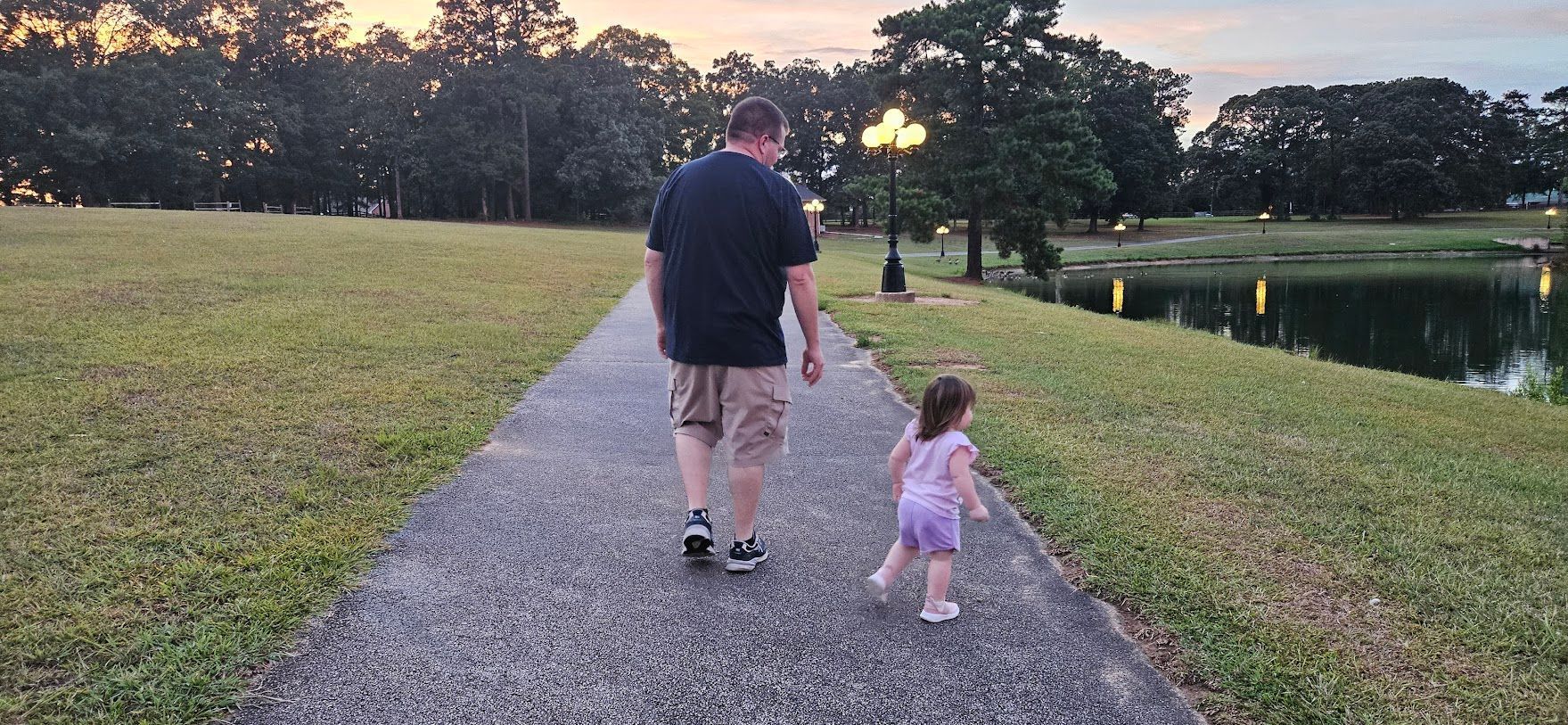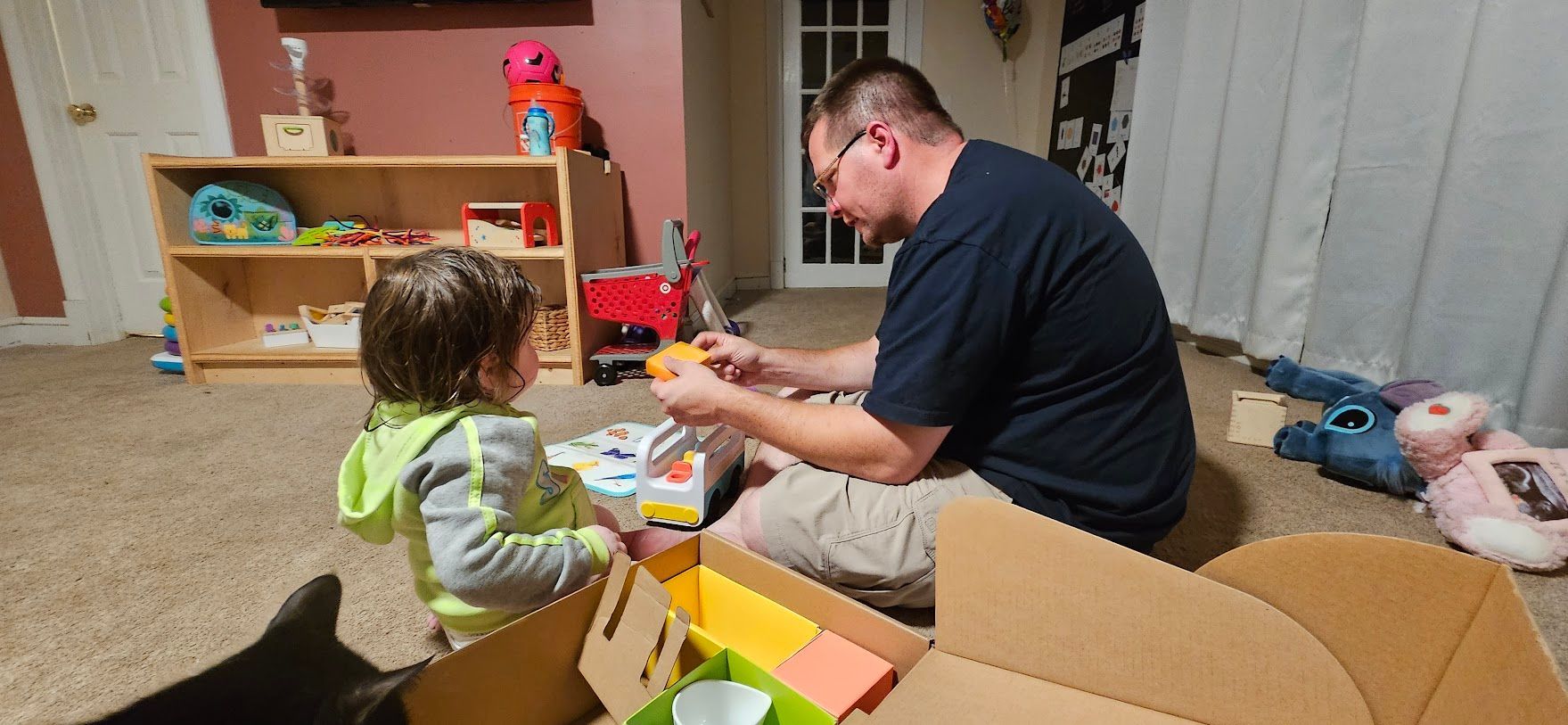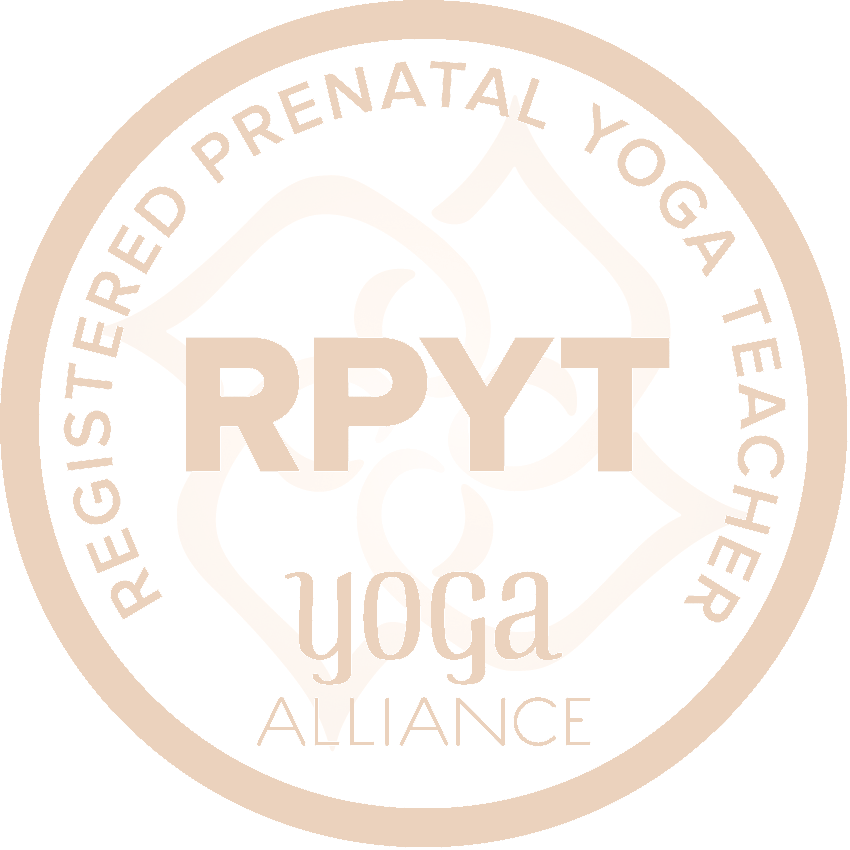
In the quiet moments of motherhood, we often find ourselves caught between the desire to protect and the need to let go. These moments challenge us to step back, observe, and allow our children to grow into their own unique beings. It’s in these spaces that we truly begin to live a heart-led life—a journey that calls for deep love, gentle observation, and the courage to let go. This is the essence of heart-led parenting.
A Heart-Led Moment of Realization in Parenting
The other day, I stood in the lobby of my husband's print shop, watching our one-and-a-half-year-old daughter play. She was fully absorbed in her little world, exploring every nook and cranny with the kind of curiosity that only a child can possess. As I watched her move from object to object, I felt the urge to guide her, to step in and redirect her attention to something safer or more educational. My husband, who had been away for work and cherishes every moment with her, gently stopped me.
“Just let her do her thing,” he said with a quiet smile. His words struck me—why was I so eager to intervene?
It dawned on me that I was interrupting something beautiful: my daughter’s independent, imaginative play. I had longed for her to reach this stage, yet here I was, struggling to recognize it for what it was—a sign that she was becoming her own person. Parenting is full of these bittersweet moments, where the milestones we eagerly anticipate bring with them a subtle sadness. The more capable our children become, the less they seem to need us, and that can be hard to accept.
The Emotional Tug-of-War of Letting Go
As mothers, we pour so much of ourselves into our children. We nurture, guide, and protect them from the moment they enter this world. We learn their every cry, every need, every quirk. But with each new stage of growth, there’s a subtle shift. They begin to explore the world on their own, needing our constant attention less and less. And while this independence is something we long for, it often brings an unexpected sadness.
It’s a delicate tug-of-war between the joy of seeing them grow and the fear of not being needed as much. How do we let go while still holding on to that deep connection we’ve cultivated? How do we give them space without losing our sense of place in their lives?
This is where heart-led parenting comes in. It’s about trusting that, even as our children become more independent, the love and guidance we’ve poured into them remains. It’s about leading with love, not control, and understanding that letting go is just another way of nurturing them.
Embracing Spontaneity and Presence in Mindful Motherhood
Later that day, we made a spontaneous trip to the park across the street. It’s a familiar place for us, one we visit almost daily, following the same paths and routines. But something inside me prompted a change—I resisted the urge to direct them, to follow the usual route. Instead, I let them lead, trusting that wherever they wandered, they were safe, happy, and connected.
As we strolled by the lake, I felt a sense of peace wash over me. There was something deeply satisfying about letting go and simply being present, allowing the moment to unfold as it wished.
This wasn’t just about taking a different path in the park. It was about embracing the unpredictability of life and finding beauty in the unexpected. It reminded me that, as much as I want to control and guide, there is immense value in stepping back and observing. The most profound connections often happen when we stop trying to shape every moment and instead allow them to shape us.

How to Practice Heart-Led Parenting in Daily Life
So how do we, as mothers, embrace heart-led parenting? How do we cultivate a practice of letting go while still remaining deeply connected to our children?
Here are a few practical steps to help you nurture independence in your children and yourself:
- Pause Before Intervening: When you feel the urge to step in and guide your child’s play or behavior, take a moment to pause. Ask yourself, “Is this moment truly requiring my intervention, or can I give them space to explore on their own?” Simply observing for a minute or two before stepping in can help you develop trust in your child’s ability to navigate their world.
- Create Opportunities for Independence: Encourage your children to take on small tasks by themselves, whether it’s picking out their clothes, cleaning up their toys, or deciding how they want to spend their playtime. By giving them these moments of autonomy, you’re helping them build confidence and self-reliance.
- Trust Your Partner’s Parenting Style: Just as our children need space to grow, so do our partners. Allow your spouse or co-parent to engage with your children in their own way, without feeling the need to intervene or correct their approach. This not only strengthens the bond between them, but it also fosters a sense of shared responsibility in parenting.
- Reflect on Your Own Need for Control: Letting go isn’t just about giving our children space—it’s also about examining our own need for control. Take time to reflect on why you might feel compelled to micromanage certain aspects of your child’s life. Is it coming from a place of fear or insecurity? By acknowledging these feelings, you can begin to release them.
Reflecting on Attachment: Applying Yoga’s Teachings in Parenting
That evening, as we unpacked our latest Lovevery Play Kit, I noticed my husband’s large hands blocking our daughter’s view as he excitedly demonstrated each toy. I felt the familiar urge to intervene, to correct his approach. But I paused, reminding myself that this was his moment with her, just as much as it was hers.
“Let him be Dad,” I thought. “Let him find his own way, as you have found yours.”
Reflecting on these moments, I began to question where my need to micromanage came from. Was I overbearing? Was I slipping into the role of a helicopter parent? Or was it something deeper—perhaps a lingering habit from the newborn phase, where I had been the default parent, responsible for every need, every comfort, every response?
This is where yoga has offered me invaluable insights. One of the teachings that resonates deeply in my role as a mother is Aparigraha—the practice of non-attachment. In the context of mindful motherhood, it means letting go of the need to control, to possess, or to shape every aspect of our children’s lives. It’s about trusting that, in giving them space, we allow them to grow, to explore, and to become who they are meant to be. It’s also about recognizing that our partners, too, need the freedom to parent in their own way, without interference or judgment.
Embracing the Heart-Led Path in Parenting
Living a heart-led life is not about perfection. It’s about presence. It’s about showing up fully, with an open heart, even when it’s hard to let go. It’s about loving deeply, but not clinging; guiding gently, but not controlling; observing with care, but not imposing. It’s in these moments of balance that we find our true selves, and in turn, allow our children and loved ones to find theirs.
The journey of motherhood is filled with challenges and triumphs, joy and sorrow, attachment and release. Each day brings new opportunities to practice non-attachment, to observe without intervening, to love without holding too tightly. And in doing so, we create a space where everyone in the family can grow—not just the children, but the parents as well.
As I continue on this path, I’m reminded that the heart-led journey is one of constant evolution. It requires mindfulness, patience, and a willingness to embrace the unknown. It asks us to be both strong and soft, to lead and to follow, to give and to receive. And in the end, it’s about finding the grace to live authentically, with love at the center of everything we do.
✨Gentle Next Steps
Don’t scroll past the nudge.
If something stirred in you, trust that. It’s not about someday — it’s about today.
Start with the free Heart-Led Handbook to reconnect with your intuition and remember who you are beneath the overwhelm.
Or step into the Rooted Beginnings Yoga Workshop—a gentle, judgment-free space for moms who feel disconnected and are ready to come home to themselves.
Your healing isn’t selfish. It’s sacred. And it’s time.
More From the Blog




